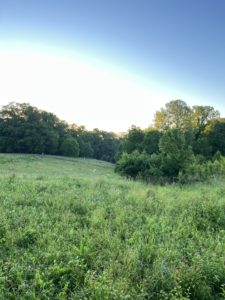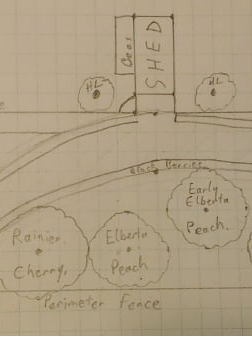Tree Tubes
are very necessary for raising baby trees with sheep, to keep the sheep from grazing the new shoots before they are taller than the sheep can eat. When we started our main tree planting, we ordered five foot tree tubes for the large trees (Pecan, Oak) and three foot tree tubes for the smaller trees/bushes (apple, hazelnut, persimmon, pawpaw). The issue has been that sheep can definitely eat above three feet, so we’ve struggled to keep them from eating off the tops of the small trees/bushes. The apple trees made it above browse line a white ago, but they really seem to like hazelnuts. Last year, I tried something I’ve seen where I used two five foot tubes as a wider tube around the hazel nuts, and we’re getting hazelnuts off those this year! The other success we’ve had is the oaks growing almost too large for the tubes. This has caused some leaf/grass litter to build up in the tubes and keep moisture near the trees, causing them to fill up with ants under the bark.
This weekend, I took all the tubes off the oaks to free them up to keep growing and reuse around more hazelnut bushes. We’re looking forward to hazelnuts this fall!
To the right is a picture of the original tree planting. Below, from left to right, are a baby hazelnut, wasp and spider nests in a tree tube, and a picture of our sheep, getting fat on the weeds this summer.
As a side note, we really do love the spiders. Trees with spider webs is a premium method to control flies.




We want to hear from you!
We are in a period of planning and planting, adding new pick your own crops that can be raised without spraying poison at The Shire. If you live in the area and have crops you would want to pick, please send us a note!








